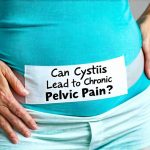Interstitial Cystitis (IC), also known as Bladder Pain Syndrome (BPS), is a chronic condition causing bladder pain, urinary frequency, and urgency. It’s a frustrating illness for many because its causes aren’t fully understood, diagnoses can be delayed, and effective treatments are often elusive. The experience of IC varies significantly from person to person, making it difficult to standardize care or predict the course of the disease. While there is currently no universally accepted “cure” for IC, significant progress has been made in managing symptoms and improving quality of life, leading many to wonder if reversal – meaning a return to bladder function without ongoing symptoms – is possible.
The question of whether interstitial cystitis can be reversed isn’t straightforward. It hinges on what’s causing the condition in each individual, how long it’s been present, and how aggressively treatment is pursued. For some individuals, remission—a period with minimal or no symptoms—can feel like a reversal, even if underlying bladder changes persist. Others may experience significant improvements that allow them to live relatively normal lives despite ongoing, mild symptoms. Understanding the different theories behind IC development and the range of available treatments is crucial for exploring the potential for symptom reduction, remission, or even a form of functional “reversal.” This article will delve into these aspects, offering insights into current understanding and hopeful pathways toward improved bladder health.
Understanding the Complexity of Interstitial Cystitis
IC isn’t just one disease; it’s likely an umbrella term encompassing several different conditions with similar symptoms. Historically, researchers believed IC was due to a defect in the bladder lining, allowing urine to irritate the bladder wall. However, this “bladder leak” theory has largely been superseded by more nuanced understanding. Current theories point to a multifaceted etiology, often involving:
- Autoimmune dysfunction: Some research suggests that the immune system may mistakenly attack the bladder lining.
- Nerve damage/Neuropathic pain: Chronic inflammation can lead to nerve sensitization and chronic pain signals even in the absence of obvious structural damage. This is increasingly recognized as a central component of IC.
- Mast cell activation syndrome (MCAS): Mast cells, part of the immune system, release histamine and other inflammatory mediators. In some individuals with IC, mast cells become overactive, contributing to bladder inflammation and pain.
- Microscopic Inflammation: Even without obvious lesions, microscopic inflammation can contribute to significant symptoms.
The complexity of these potential causes explains why a single treatment rarely works for everyone. It also highlights the importance of personalized medicine, where treatment plans are tailored to the individual’s specific contributing factors. Identifying which mechanisms are driving a person’s IC is key to designing an effective strategy, and this often requires detailed diagnostic evaluation beyond standard cystoscopy or urine tests. The emerging understanding of these different pathways provides hope for more targeted treatments in the future. Considering whether can interstitial cystitis be mistaken for pms may also be helpful during diagnosis.
Treatment Approaches & Potential for Remission
Treatment for IC aims to manage symptoms and improve quality of life. There’s a wide spectrum of options available, ranging from conservative measures to more invasive interventions. These can be broadly categorized as:
- Lifestyle modifications: Dietary changes (avoiding bladder irritants like caffeine, alcohol, citrus fruits, spicy foods), stress management techniques, and pelvic floor muscle therapy are often the first line of defense.
- Medications: Various medications may provide relief, including pentosan polysulfate sodium (Elmiron – controversial due to potential vision side effects), amitriptyline, antihistamines, pain relievers, and mast cell stabilizers.
- Bladder instillations: Medications are directly instilled into the bladder through a catheter. Dimethyl sulfoxide (DMSO) is a common instillation agent, but newer options targeting inflammation or nerve pathways are being explored.
- Neuromodulation: Techniques like sacral neuromodulation and percutaneous tibial nerve stimulation can help regulate bladder function and reduce pain by modulating nerve signals.
- Surgery: In rare cases, surgery may be considered as a last resort for severe, refractory IC. However, surgical interventions are generally avoided due to limited long-term success rates and potential complications.
While none of these treatments guarantee complete reversal, many individuals experience significant symptom reduction and achieve remission with a combination of therapies. Remission doesn’t necessarily mean the underlying bladder changes have disappeared, but it does signify a period where symptoms are minimal or absent, allowing for improved function and quality of life. The potential for long-term remission is higher in those diagnosed early and who respond well to initial treatments. Some patients wonder can interstitial cystitis be cured altogether.
Addressing Neuropathic Pain & Nerve Sensitization
A growing body of evidence suggests that neuropathic pain plays a significant role in many IC cases. This means the pain isn’t necessarily caused by damage to the bladder itself, but rather by sensitization of the nerves involved in bladder sensation. This understanding has led to new treatment approaches targeting nerve pathways:
- Low-dose Naltrexone (LDN): LDN is an opioid antagonist that, at low doses, can modulate immune function and reduce inflammation, potentially decreasing nerve sensitization. It’s gaining popularity among IC patients but requires careful monitoring by a physician.
- Amitriptyline & other Tricyclic Antidepressants: While traditionally used for depression, these medications have demonstrated effectiveness in managing chronic pain conditions, including neuropathic pain. They can help modulate nerve signals and reduce pain perception.
- Neuromodulation therapies (Sacral Neuromodulation/SNS & Percutaneous Tibial Nerve Stimulation/PTNS): These techniques directly target the nerves controlling bladder function. SNS involves implanting a small device to send electrical impulses to the sacral nerves, while PTNS uses a needle electrode inserted near the ankle to stimulate the tibial nerve, indirectly affecting bladder control. Both can help regulate nerve signals and reduce pain.
- Physical Therapy: Pelvic floor physical therapy helps release tension in pelvic muscles that may be contributing to nerve compression or irritation.
Successfully addressing neuropathic pain is crucial for achieving lasting symptom relief. Often, a multi-modal approach combining medication, neuromodulation, and physical therapy yields the best results. This focus on nerve health represents a shift in IC treatment paradigms and offers renewed hope for those struggling with chronic bladder pain. It’s also worth considering if can cystitis be a side effect of menstruation contributes to neuropathic pain.
The Role of Mast Cell Activation Syndrome (MCAS)
For a subset of patients, MCAS is believed to be a significant driver of IC symptoms. Mast cells release histamine and other inflammatory mediators that can irritate the bladder lining and contribute to pain. Identifying MCAS involves testing for elevated levels of mast cell activation markers in urine or blood:
- H1 antihistamines: Medications like cetirizine or loratadine are often used as a first step, but may not be sufficient for more severe cases.
- H2 antihistamines: Adding H2 blockers like famotidine can further reduce histamine levels and improve symptom control.
- Mast cell stabilizers: Cromolyn sodium is a mast cell stabilizer that helps prevent the release of inflammatory mediators from mast cells. It’s available in oral and bladder instillation forms.
- Dietary modifications: Eliminating foods known to trigger mast cell activation, such as fermented products, alcohol, and certain fruits and vegetables, may provide relief.
Diagnosing MCAS can be challenging, but if suspected, it’s essential to explore treatment options specifically targeting mast cell stabilization. Combining MCAS-focused therapies with traditional IC treatments often leads to improved outcomes for those who respond to this approach.
Dietary & Lifestyle Interventions for Bladder Health
Beyond specific medications and procedures, adopting a bladder-friendly lifestyle can significantly impact symptom management and potentially contribute to remission:
- Eliminate Bladder Irritants: Common irritants include caffeine, alcohol, citrus fruits, tomatoes, spicy foods, artificial sweeteners, and carbonated beverages. Keeping a food diary can help identify individual triggers.
- Hydration Management: While staying adequately hydrated is important, excessive fluid intake can exacerbate urinary frequency. Finding the right balance is key.
- Pelvic Floor Muscle Therapy: Strengthening and relaxing pelvic floor muscles through targeted exercises can improve bladder control and reduce pain. A qualified pelvic floor physical therapist can provide personalized guidance.
- Stress Management: Chronic stress can worsen IC symptoms. Incorporating stress-reducing techniques like yoga, meditation, or deep breathing exercises into daily routine is crucial.
- Regular Exercise: Moderate exercise promotes overall health and well-being, which can positively impact bladder function.
In conclusion, while a complete “cure” for interstitial cystitis remains elusive, the potential for symptom reduction, remission, and improved quality of life is very real. A personalized approach that addresses the underlying mechanisms driving each individual’s IC—whether it’s neuropathic pain, mast cell activation, autoimmune dysfunction, or a combination thereof—is essential. By embracing a multifaceted treatment plan that incorporates lifestyle modifications, medications, therapies, and ongoing monitoring, individuals with IC can take control of their condition and strive for significant improvements in bladder health and overall well-being.





















